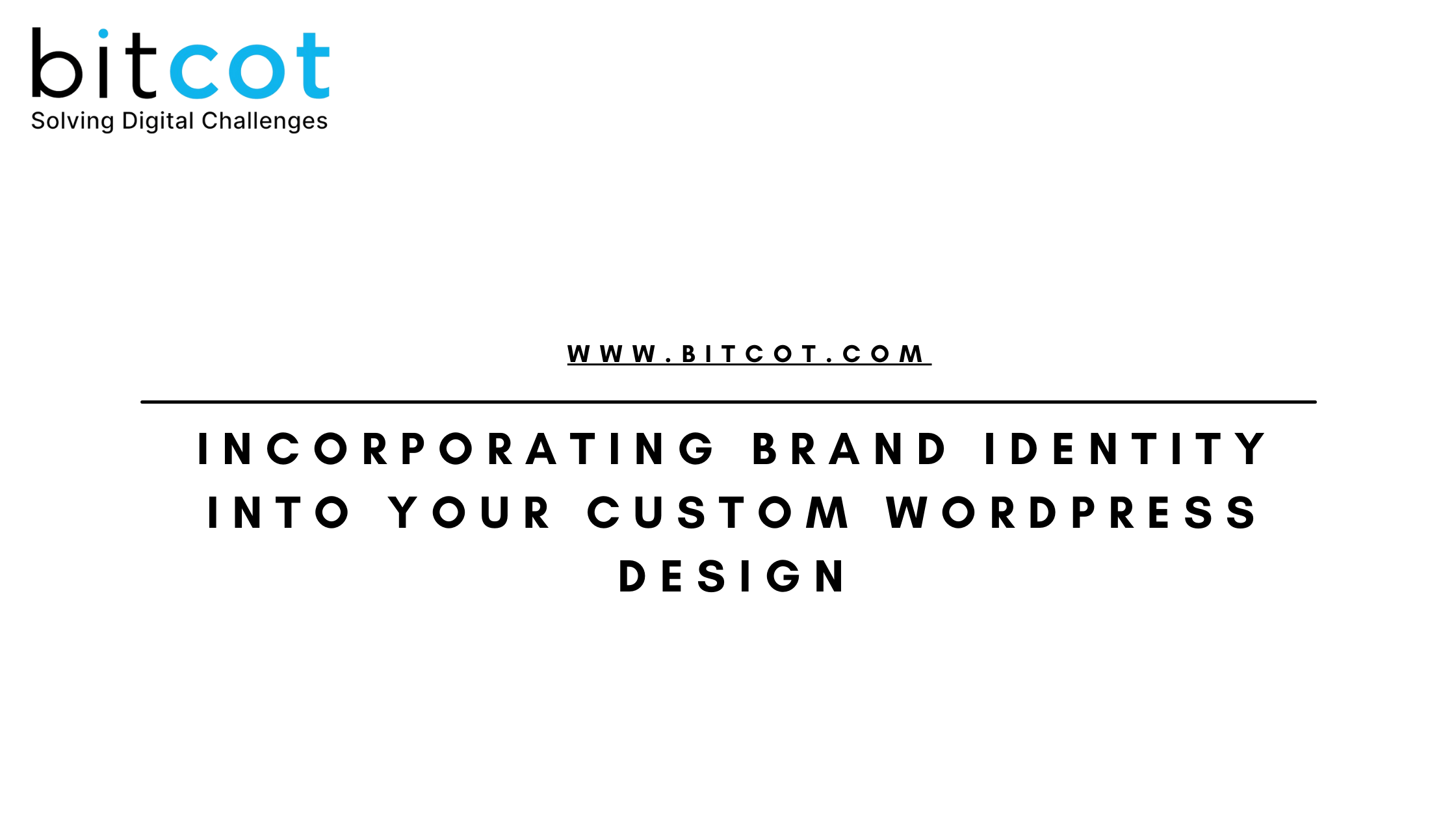When it comes to establishing a strong online presence, the importance of brand identity cannot be overstated. Your brand identity encompasses the visual elements, messaging, and overall experience that differentiate your business from others. A well-crafted brand identity helps build recognition, trust, and loyalty among your audience. When designing a custom WordPress site, integrating your brand identity is crucial for creating a cohesive and impactful online experience. Here’s how you can effectively incorporate your brand identity into your custom WordPress design.
- Understand Your Brand Identity
Before diving into the design process, it’s essential to have a clear understanding of your brand identity. This includes your brand’s mission, values, target audience, and unique selling propositions. It also involves visual elements such as your logo, color palette, typography, and imagery. Having a solid grasp of these elements will guide the design choices you make for your WordPress site.
- Choose a Theme that Reflects Your Brand
WordPress offers a plethora of themes, but selecting one that aligns with your brand identity is crucial. Opt for a theme that supports your brand’s visual style and functional requirements. For instance, if your brand is known for its minimalist design, a theme with clean lines and ample white space will work well. Conversely, if your brand is vibrant and energetic, look for a theme that allows for bold colors and dynamic layouts.
- Customize Your Theme
One of the advantages of using WordPress is the ability to customize themes to fit your brand identity. Customize your theme’s colors to match your brand’s color palette. This includes adjusting the background, text, and link colors to ensure consistency. Incorporate your brand’s typography by selecting fonts that reflect your brand’s personality. Most premium themes allow for easy font customization, so you can maintain consistency with your brand’s typeface.
- Incorporate Your Logo
Your logo is a cornerstone of your brand identity, so it should be prominently displayed on your website. Ensure that your logo is included in the header and footer of your site, and consider using it as a favicon (the small icon that appears in the browser tab). A high-quality logo image that is properly sized and optimized will ensure it looks sharp and professional across all devices.
- Utilize Brand Colors and Imagery
Your brand’s color palette should be reflected throughout your website. Use these colors for key elements such as buttons, links, and headings to create a consistent look and feel. Similarly, incorporate imagery that aligns with your brand’s style and values. This could include custom graphics, brand-specific photos, or illustrations that reinforce your brand’s message.
- Design for User Experience
A strong brand identity isn’t just about visual elements; it’s also about the experience you provide to your users. Ensure that your WordPress site offers a seamless user experience by focusing on navigation, functionality, and responsiveness. A well-designed site should be easy to navigate, with intuitive menus and clear calls to action. Responsive design is also essential to ensure your site looks and functions well on all devices, from desktops to smartphones.
- Consistency Across Pages
Consistency is key to reinforcing your brand identity. Make sure that your brand’s visual elements and messaging are uniform across all pages of your site. This includes consistent use of colors, fonts, and imagery. Uniformity helps create a professional appearance and enhances brand recognition. Ensure that your brand’s voice and tone are consistent in your content, whether it’s blog posts, product descriptions, or landing pages.
- Integrate Brand Messaging
Your website should effectively communicate your brand’s message. Incorporate your brand’s tagline, mission statement, or unique selling propositions into key areas of your site, such as the homepage or About page. Use engaging and persuasive language that reflects your brand’s personality and resonates with your target audience.
- Enhance with Custom Features
Custom features can further reinforce your brand identity. Consider adding custom widgets, plugins, or interactive elements that align with your brand’s goals. For example, a restaurant might include a custom menu plugin, while a photographer might showcase a portfolio gallery with unique styling.
- Test and Refine
Once your custom WordPress design is up and running, it’s important to test and refine it. Gather feedback from users to ensure that the design effectively communicates your brand identity and provides a positive user experience. Make adjustments as needed based on user feedback and performance analytics to continuously improve your site.
Conclusion
Incorporating your brand identity into your custom WordPress design is a vital step in creating a memorable and effective online presence. By understanding your brand, selecting the right theme, customizing visual elements, and focusing on user experience, you can build a website that not only looks great but also reinforces your brand’s message. A well-integrated brand identity will help you stand out from the competition, engage your audience, and build lasting connections with your customers.
Also Read: The Ultimate Guide to Selling Your Business: What You Need to Know



